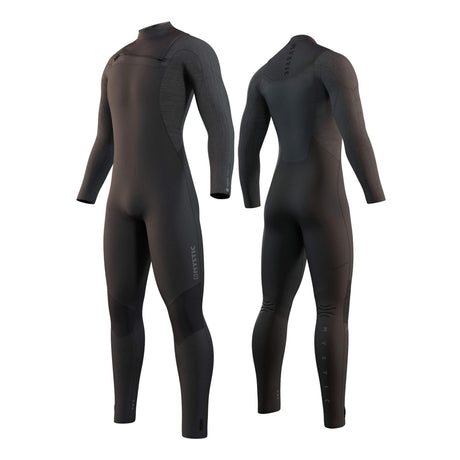Putting on a wetsuit properly is essential to fully enjoy water activities such as surfing, diving, or paddleboarding. In this guide, we will show you step by step how to put on a wetsuit correctly to ensure a comfortable fit and optimal performance in the water.
How should the wetsuit fit?
To know how to put on a wetsuit In a proper way, it is essential to pay attention to having a good fit to ensure a comfortable experience in the water. The suit should fit snugly to the body without restricting your movements. It should be close to the skin to minimize the entry of cold water, but avoid making it too tight, as this will hinder your breathing and mobility.
To achieve the ideal fit, make sure that the seams are aligned correctly. Check for any excessive folds or wrinkles, as this can cause discomfort or chafing during water activities. If you find any irregularities in the seams or the fit of the suit, adjust it gently until you achieve an optimal result.
Remember that every body is unique, so it is important to try different suits and sizes to find the one that fits your shape and size best. Some brands offer different models that cater to different body types, such as specific suits for women, men, or children.
What thickness of neoprene to use?
The thickness of the suit of neopreno The choice you make plays a crucial role in your comfort and protection during water activities. Neoprene is an insulating material that helps retain body heat by trapping a thin layer of water between the suit and your skin.
The choice of the right thickness depends on the water temperature and the weather conditions you will face. In colder waters, such as surfing or diving in cold water, a thicker neoprene like 5mm is recommended to provide greater thermal insulation. These thicker suits are designed to retain body heat and maintain a comfortable internal temperature. On the other hand, in warmer waters or tropical climates, you can opt for a thinner thickness, as the main goal will be to protect against chafing and provide an additional layer of protection.
What size should I use for the wetsuit?
The choice of the correct size is essential to ensure an optimal fit that is also comfortable put on the wetsuitTo determine the appropriate size, it is advisable to take into account your height and weight. Many wetsuit brands provide size charts that relate these measurements to the specific sizes of their products.
When consulting the size chart provided by the manufacturer, look for the combination of height and weight that best fits your profile. However, it is important to keep in mind that sizes may vary between different brands and models of wetsuits. Therefore, it is advisable to try on the suit before making a purchase, especially if you have the opportunity to do so in a physical store. This way, you can assess how the suit fits your body and ensure that it provides you with the necessary comfort and freedom of movement.
Wetsuit with zipper
The back-zip wetsuit is a popular choice for water activities such as surfing, diving, and paddleboarding. Designed with a zipper at the back, this suit provides a snug and secure fit.
To know how to put on the zipper wetsuit Properly, slide your legs one at a time through the corresponding openings and make sure the suit gradually adjusts properly around your legs and buttocks.
Once the suit has reached your waist, stretch it out and insert your arms into the sleeves, making sure they are well aligned. You should pay attention to ensure that the zipper is completely closed to avoid water leaks. The wetsuit will provide you with the thermal protection and mobility needed to enjoy your favorite water activities.
Wetsuit without zipper
To know how to put on a zipperless wetsuit It may seem like a challenge at first, but with the right steps, you can achieve a comfortable and secure fit. These suits, often referred to as entry-level wetsuits, are common in water sports such as surfing and diving, and generally offer greater flexibility and freedom of movement.
Before starting, make sure you are dry and free of sharp objects that could damage the suit. It is also advisable to use a little water or a lubricant solution inside the suit to facilitate entry.
Insert one leg into the suit and then the other, gently pushing down until the legs are fully inside. Make sure the neoprene is stretched without wrinkles in the crotch.
Then, introduce one arm at a time into the sleeves of the suit. Make sure to stretch the neoprene and avoid folds or twists. Once the arms are in place, pull the suit up over your torso. Slowly lift your shoulders to allow the suit to rise and fit properly.
Once the suit is in place, pull any excess neoprene up and down the legs and sleeves to ensure it fits well. Make sure the suit does not restrict your movement and that you feel comfortable.
How long does a wetsuit last?
The lifespan of a wetsuit varies depending on care and usage. A well-maintained wetsuit can last for several years. For this reason, it is important to rinse it with fresh water after each use, avoid excessive sun exposure, and store the suit in a cool, dry place.



